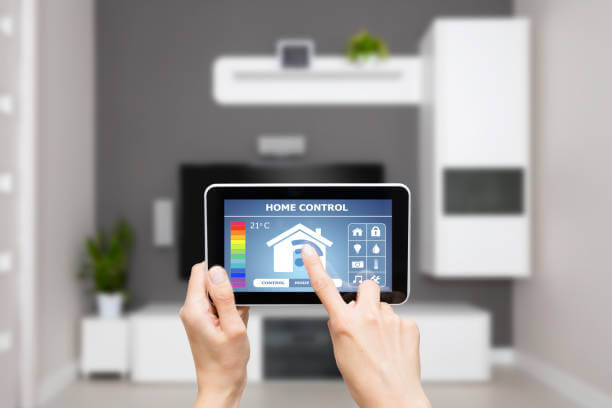Smart home devices are entering the mainstream. A quarter of US broadband households plan to buy a smart speaker or smart door lock in 2019.

Smart home integration has been available for years, but multiple apps and systems were a barrier to adoption for consumers. Voice control units like Amazon Alexa and Google Home are changing the game when it comes to smart homes. Having one interface that controls a homeowner’s smart home devices appears to flatten the final hurdle of consumer acceptance.
It’s time to upgrade your home with smart devices to enjoy the perks that technology offers to make your abode more comfortable.

Light Switch
Install an innovative voice-compatible light switch to replace single-function switches. These high-tech switches replace your old light switch but have multiple functions including built-in nightlights, motion sensors, and dawn/dusk sensors.
Verbal commands allow you to control the lights but also add events to your calendar and light the way to the kitchen for a midnight snack.
Doorbell
Gone are the days when a chime announces an unseen visitor. Today’s doorbells let you see, hear, and speak to anyone at your door from your smartphone, tablet, or PC in crystal-clear HD video. You’ll never wonder who is at your door, even if you’re not home. Check in on your home at any time and keep it protected with video footage of any visitors. Motion detectors let you monitor the area on demand.
Door Lock
Sturdy keyless locks are quickly replacing the bolt locks of before. Homeowners don’t have to worry about having keys to carry or hide for a guest. These advanced technology welock are compatible with home automation systems so you can lock or unlock the door remotely via the app. Visitor logs tell you what code opened the door and when so you know if you’ve had unexpected visitors.
Smart Thermostat
Voice controlled smart thermostats allow you to adjust the temperature from the couch with a simple command. You can also ask for real-time energy consumption figures along with the measured impact to your utility bill for the new setting. Smart thermostats will control the air con usage when you’re at home and automatically monitor your phone location to save energy when you’re not home.
Use a Wizard
Using a voice interface is the easiest way to set schedules and program appliances to run at non-peak energy hours. Smart appliances like the dishwasher and washing machine can be set to run overnight when they don’t contribute as much to the heat inside the house.
Sprinkler System
An automated sprinkler system that you can adjust with voice commands minimizes the workload of a well-maintained lawn. Sensors provide input to the smart home system to automate the length of the cycle based on rainfall to provide water conservation and cost savings on your utility bills.
Conclusion
Every design decisioncan be made more functional and powerful by integrating components of your home into a smart home network. Smart devices controlled through your digital voice assistant result in lower maintenance and can often contribute to cost savings.







